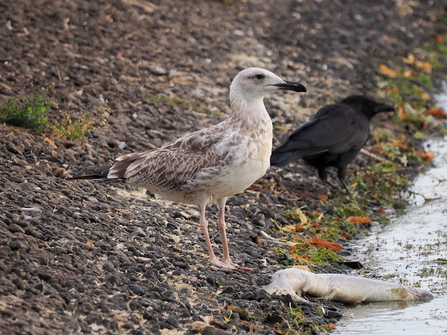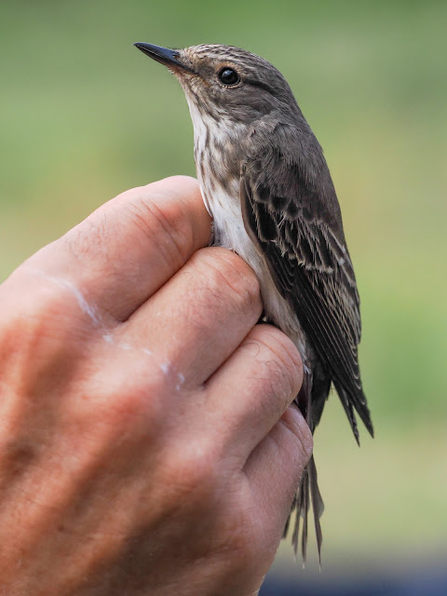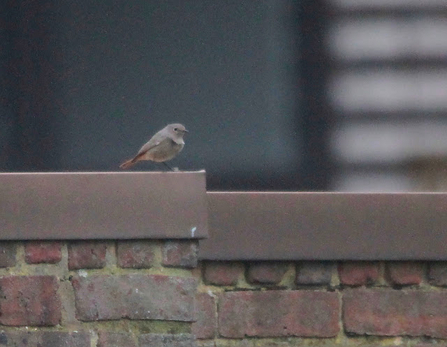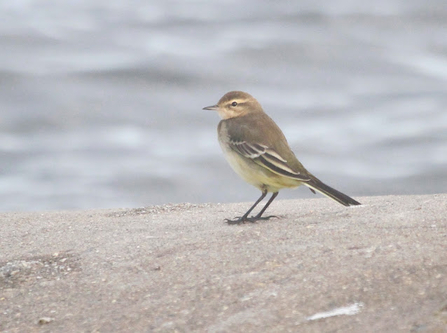Caspian Gull
Photo credit: @Chris_Farthing
The wonderful sight of 11 spoonbills over the Wetlands
Photo credit: @sjnewton
Caspian Gull
Photo credit: @Chris_Farthing
The spoonbills and caspian gull take the year list so far to 138 - nine ahead of last year but still one behind 2021. Pintail, scoter and red-crested pochard remain the most obvious gaps to be filled before the end of December although the first two have already been seen as this is written in mid-October. One or two that got away were the pair of Arctic skuas - a species not definitely recorded since 1996 - seen going south over Walthamstow Marsh on the 2nd which almost certainly flew over the reservoirs.
A flock of 14 barnacle geese made a flying visit on the 21st. The young shelduck remained on No 3 until at least the 16th although now it had fledged, it could go missing for several days. The second garganey of the year was found by CF on Lockwood on the 15th with DW discovering another on the 28th & 29th. More surprising was that September also saw only the second wigeon of the year on the 11th - nine days later than the first autumn record last year - with three more arriving on the 25th.
Shoveler numbers built to around 75 in the middle of the month although only 36 remained for the site survey on the 28th. The count also recorded 1829 tufted ducks as well as 50 little grebes and 114 great crested.
Garganey
Photo credit: @Chris_Farthing
As the breeding population expands in England, spoonbill has become a more regular rarity at the reservoirs with a pair even staying for a few days in 2020. But the 11 seen flying south may well have beaten the combined total of birds ever recorded before.
Although this flock passed without stopping, the little egret colony has proved one of the attractions for visiting herons like the 2020 spoonbills and last month’s cattle egret. It also provides a draw for home-grown little egrets with a bird rung as a nestling in 2018 returning this month after spending the previous five years wandering around North Yorkshire.
Turnstone
Photo credit: @Chris_Farthing
Eight species of waders - the same as last year - were seen this month. The only lapwing was on the 8th which was the same date that a tame turnstone was found on the 4/5 causeway which stayed around until the 10th. The sole dunlin, which have been scarcer than usual this year, was on the 19th.
Dunlin
Photo credit: @EugeneDH_Bass
The first common snipe of the autumn was late with none until the 8th when returning birds are often seen in August. But common sandpiper passage remained exceptionally strong throughout the month with 16 counted on both the 13th & 15th and still 12 passing through on the 29th when there were just two last year. The year before no common sandpipers were seen after the 13th and the peak September count was just four. But the strong passage of common sandpipers was the exception. There just two records of greenshank on the 2nd and 14th and green sandpiper on the 14th and 25th while the only redshank was on the 1st.

Caspian gull
Photo credit: @Callahanbirder
A 1W yellow-legged gull was seen on the 1st but was eclipsed by the distinctive 1W caspian gull found by CF on the No 4 causeway on the 6th. It stayed around until at least the 21st as it tucked in to dead trout. Three common terns - including the late fledging young from East Warwick - were still on the south side on the 6th with the last adult seen on the 8th, This was six days earlier than the final departing birds in 2022 but over a week later than the last birds the year before.
The only record of red kite was on the 22nd but hobby was seen on eight days compared to six last year and just a single record in 2021. Two were seen on the 19th with the last record on the 25th. After a month when the only sign that at least one little owl was still in residence was the very occasional call, one bird decided to show itself on the south west side of No 2 island on the 23rd. The second Short-eared Owl of the year was mobbed by crows north of Lockwood on the 25th.
Swifts seem to have departed early with the last two on the 1st, eight days earlier than last year. It was the same with house martins with the final birds seen on the 20th while swallows remained very scarce throughout the month. The last sand martins were four on the 24th.
Reed Warblers were still passing through until at least the 30th when one was caught - six days later than the last record in 2022 - with the final sedge warbler on the 18th, six days earlier. Garden warbler continued their good showing this autumn with records on the 14th & 15th with the final common whitethroat on the 18th (20th), lesser whitethroat on the 19th (21st) and willow warbler on the 18th (29th).

Spotted flycatcher
Photo credit: @Elliott81758817
Spotted flycatcher were seen on just two days with two - including the first ever rung at the Wetlands - on the 2nd and another on the 22nd. This compares with records on five days last year with the final bird on the 24th. Whinchat were even scarcer with the only record on the 8th compared to five days in 2022. Stonechat continue to be reliable with the first bird of the autumn on the 16th, just one day later than last year. After a bumper Spring for Common Redstarts there have unusually been no records this autumn but the second black redstart was found on the east of High Maynard by DW on the 27th and stayed until the 29th.

Black redstart
Photo credit: @ Chris_Farthing
Wheatears were seen until the end of the month but the peak count was only three on the 1st and 6th compared to six last year. It looked as if the autumn was going to pass without a single yellow wagtail on the ground with the only record until late in the month a fly-over on the 2nd. But a young bird took a liking to Lockwood and stayed for five days from the 25th with a second briefly on the 26th. Meadow Pipit passage began with seven on the 3rd, a week earlier than the first multiple records last year. The first siskin of the autumn was a single bird on the 10th.

Juvenile yellow wagtail
Photo credit: @Chris_Farthing